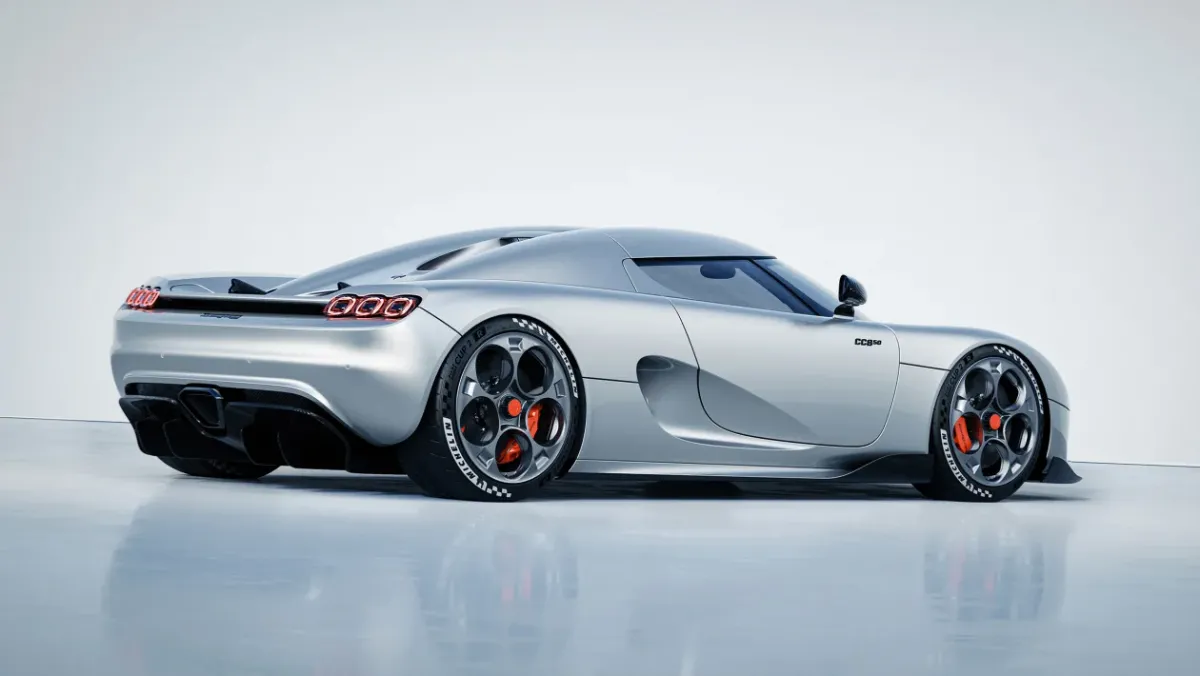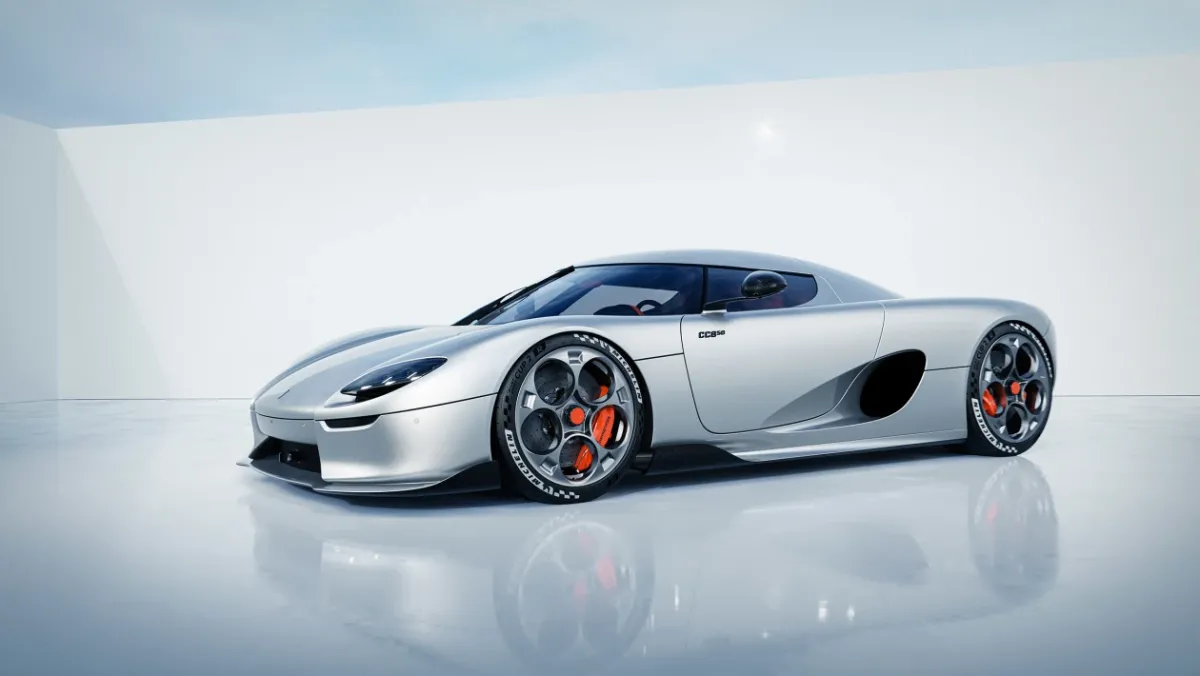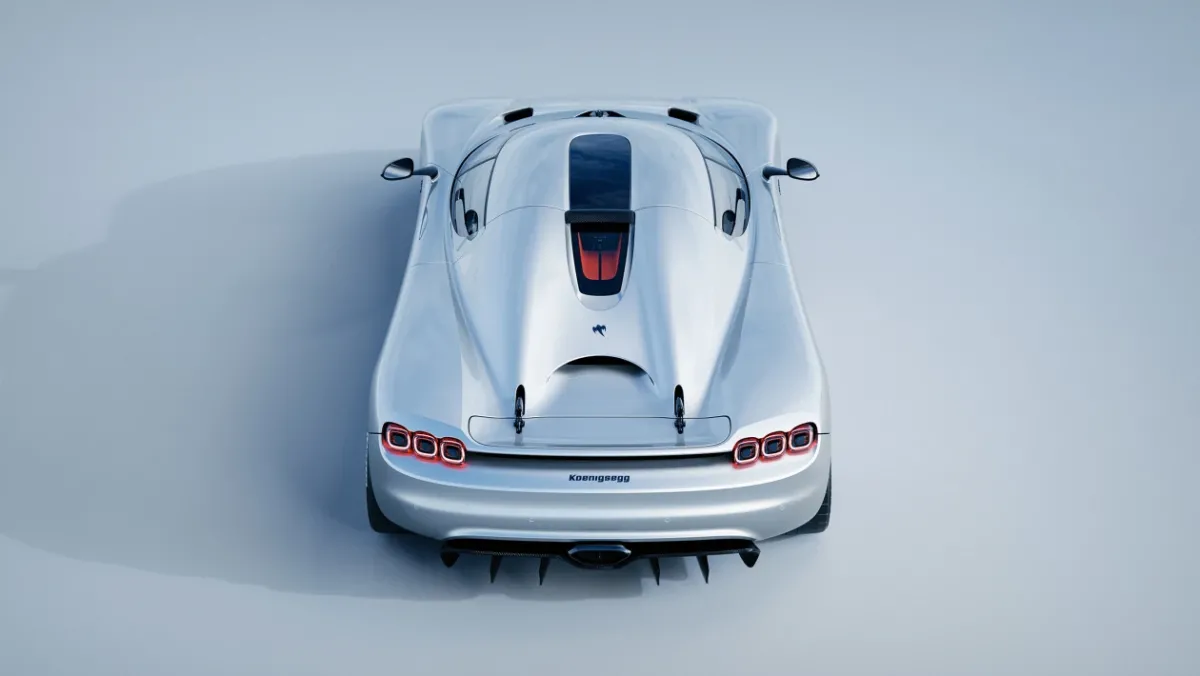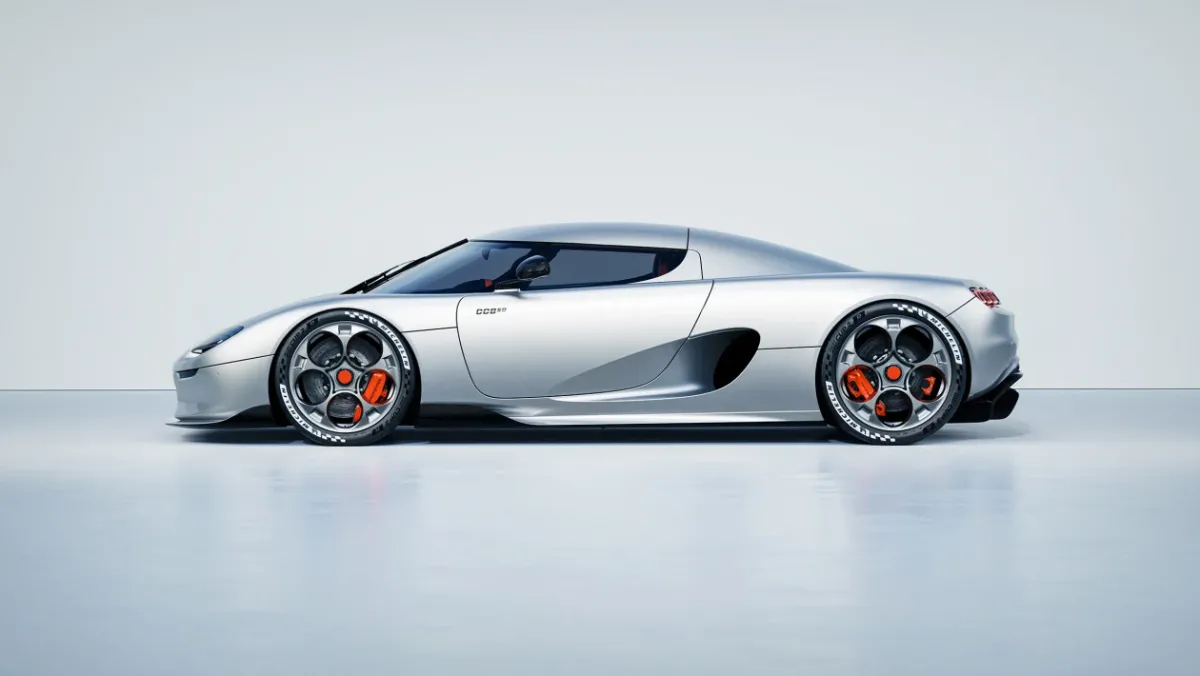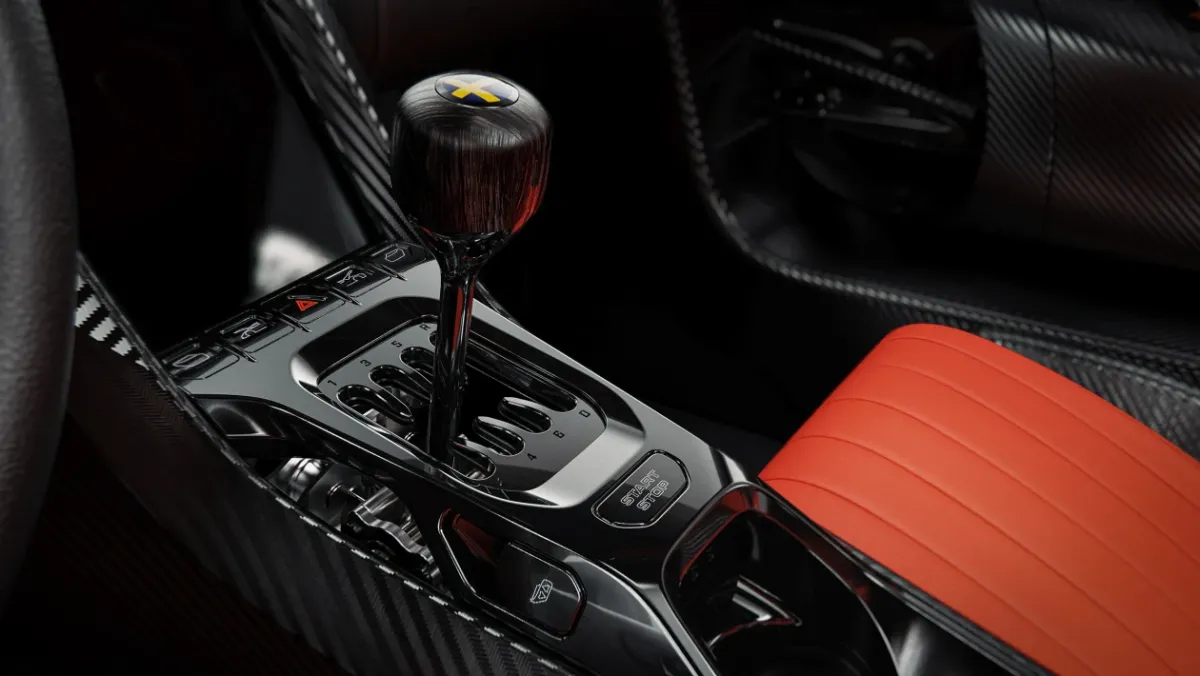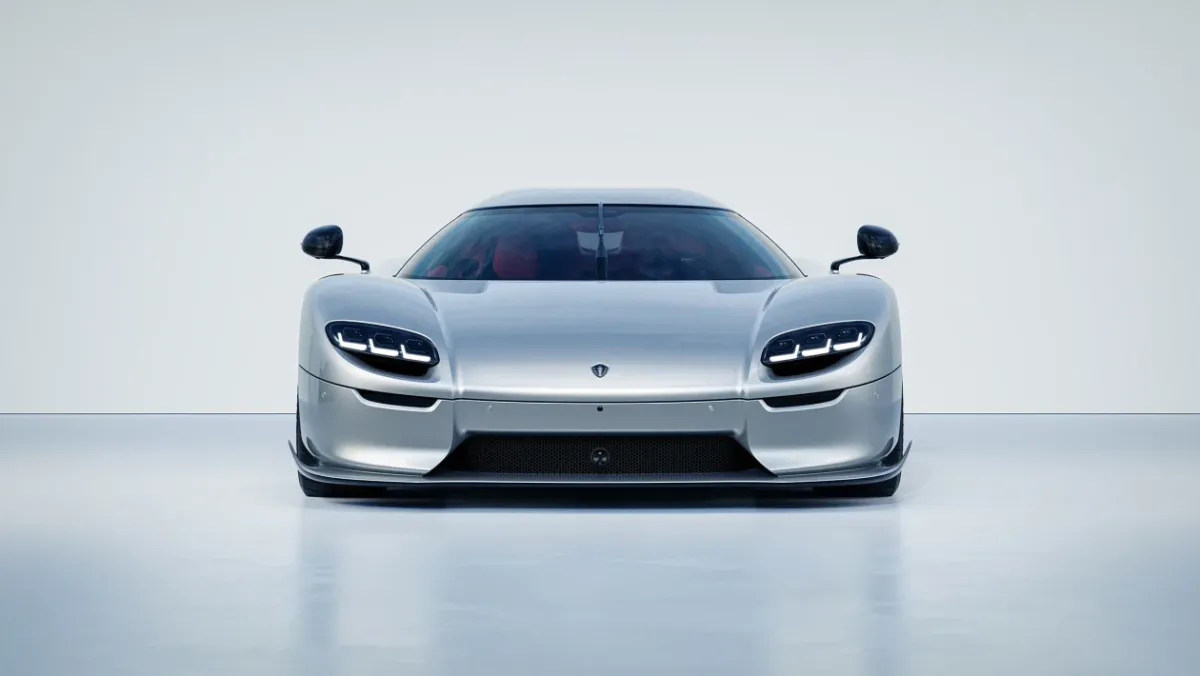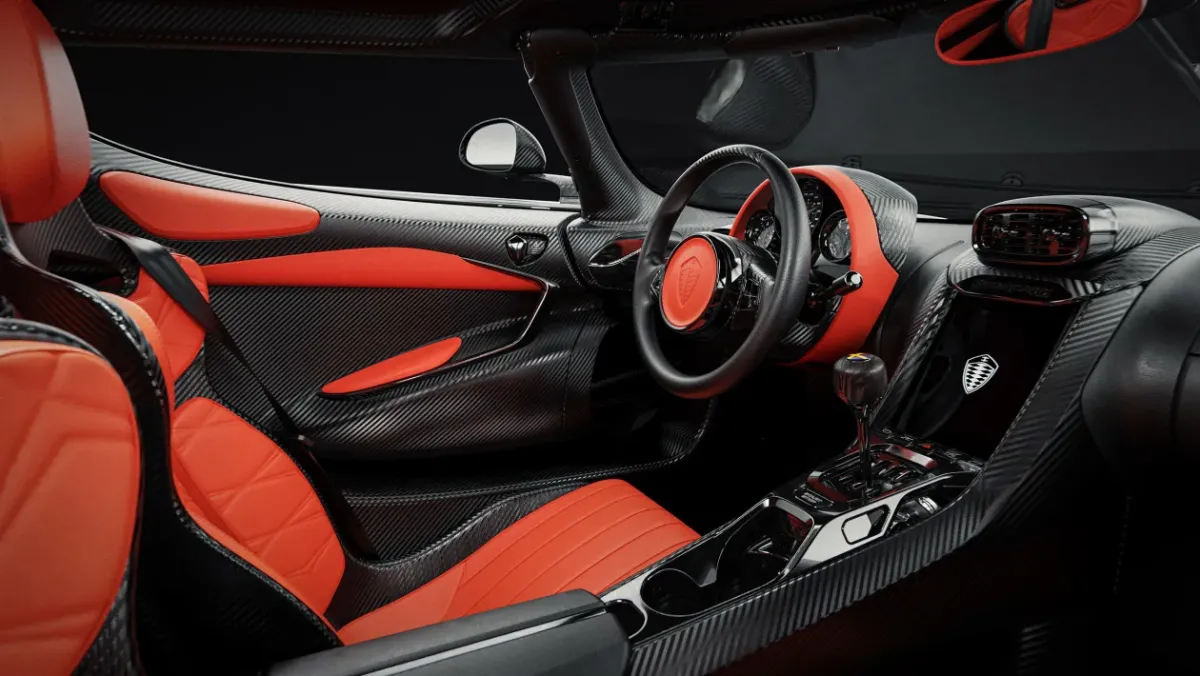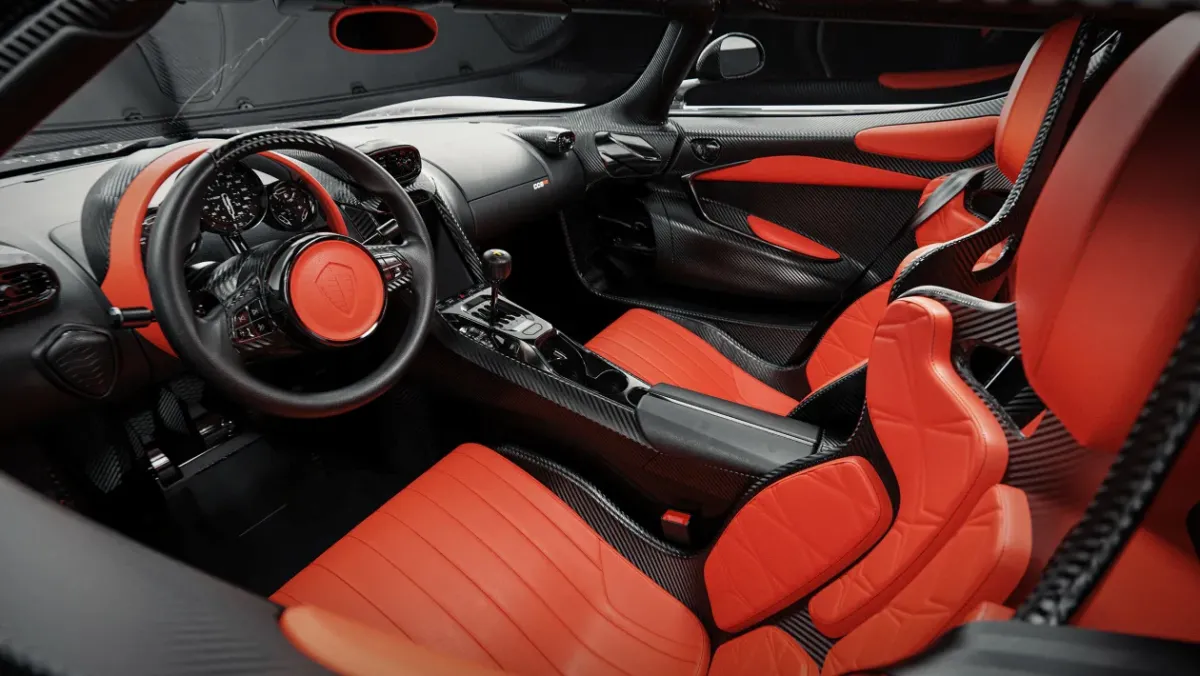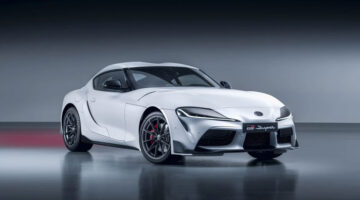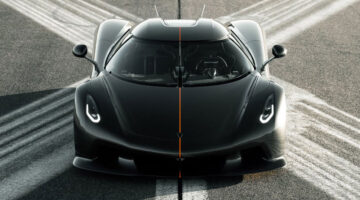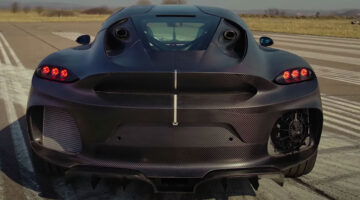50 units will be built, each with up to 1365bhp and a clever manual transmission
Not to be outdone on the lawns of Monterey California, Koenigsegg has revealed its latest rendition of the CC hypercar: the all-new CC850, a homage to the CC8S that kicked the company off 20 years ago. Limited to 50 units, the CC850 might draw upon its past in some aspects such as design, but also offers an insight into Koenigsegg’s future in others, including the key deliverable of driver engagement, rather than breaking records.
Koenigsegg is no stranger to pushing the boundaries of automotive engineering, and arguably the CC850’s most interesting new development is its ‘Engage Shift System’ transmission; one that’s effectively able to function as both a traditional h-pattern six-speed manual and a nine-speed automatic. It’s based on Koenigsegg’s current nine-speed, multi-clutch ‘Light Speed Transmission’ that debuted on the Jesko, and while the absolute mechanics of it haven’t quite been explained, the upshot is that it acts just like any other six-speed manual with a gaited gearstick and a clutch pedal, with an additional gate marked ‘D’ that then swaps it over to a nine-speed auto.
Connected to the transmission is an engine that’s slightly easier to get your head around – Koenigsegg’s own flat-plane crank 5-litre all-alloy V8 with twin ceramic ball bearing turbochargers. It’s based on the unit found in the Jesko, so shares its 92mm bore and 95.25mm stroke, double overhead camshafts, dry-sump lubrication, but comes with its own carbonfibre intake manifold and a 3D-printed titanium exhaust system. As is the case with all Koenigseggs, it’ll run happily on E85 fuel (petrol mixed with an 85 per cent mix of ethanol) producing up to 1365bhp at 7800rpm. On standard high-octane ULP this figure is reduced to 1168bhp at 7500rpm, but regardless peak torque is rated at 1020lb ft at 4800rpm. The engine will redline at 8500rpm, and where those peak figures are produced suggest this to be a revvy, highly-strung motor of the best possible kind.
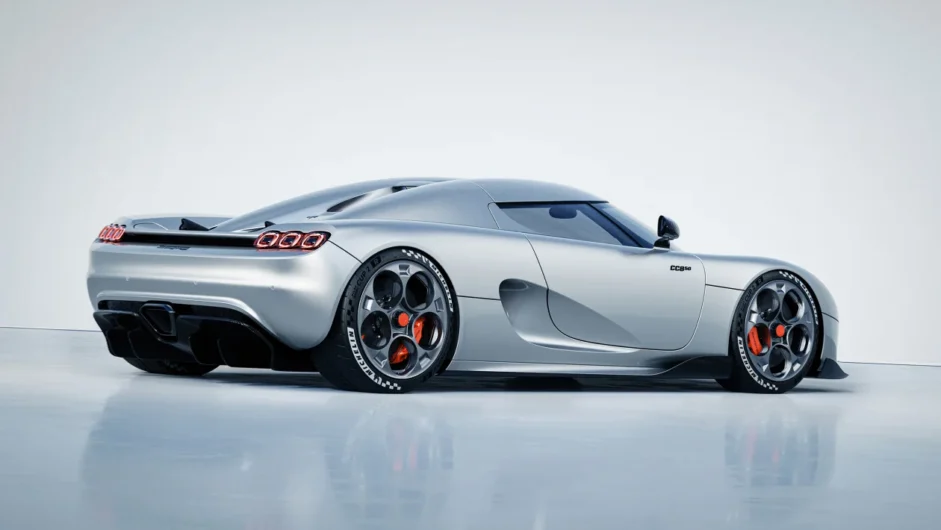
The rest of the package is typically Koenigsegg, pairing a carbonfibre monocoque chassis with double-wishbone suspension all-round. The ride-height is hydraulically-adjustable, with 30mm of adjustment on the front axle and 20mm on the rear. The dampers are electronically adjustable too, with triplex units fitted on the rear. There’s a staggered 20/21-inch wheel and tyre package with 265/35 front and 325/30 rear section Michelin Cup 2R rubber, behind which sit a set of 410mm front and 395mm rear carbon ceramic brake discs with six- and four-piston calipers.
Koenigsegg is quoting a kerb weight of 1385kg, giving it a one-to-one metric horsepower to kg figure, so it won’t exactly be tardy, but unlike the Jesko or One:1, this Koenigsegg isn’t about outright speed, but rather creating a more involving driving experience. As such, Koenigsegg hasn’t released any official performance figures, and unlike models like the Jesko Absolut, doesn’t have a specific performance focus, be that lap records, acceleration times or top speed.
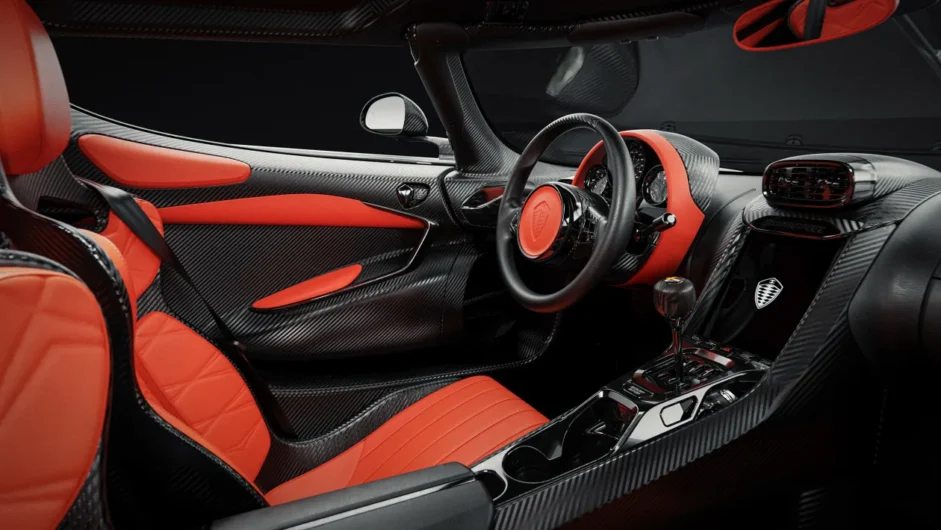
This can be seen in the CC850’s design, which mirrors the simplicity and efficiency of the original. It includes typical styling cues such as the wraparound windscreen, compact triple-element lighting units and clean surfacing, but everything’s more evolved and more sophisticated. The single side intake opening is directly referenced from the original, and together with a front splitter, skirts and substantial rear diffuser work with a mechanical rear wing to keep it stable at speeds without the need for a static wing. Peak downforce at 250kph is rated at 207kg, enough to keep the car stable at speeds or, ahem, around airfields.
Inside, the same notion of maintaining Koenigsegg’s design with a modern twist continues, with a combination of digital and physical interfaces integrated into a familiar layout. The complex dial-set takes inspiration from high-end watches, and appears to float within a backless binnacle that you can see through to the other side of.
No specific prices have been set, but we can expect a price point of over $2.3m per unit for the lucky few given the chance to buy them. It’s a tricky thing to try and create a hypercar brand from nowhere in the 21st century, and while some contemporaries, like Pagani, have made it work with the experience and provenance of its founder’s work as the father of carbonfibre, Christian von Koenigsegg has defied the odds not just to survive, but create his own dynasty that now 20 years later is worth celebrating. Not a bad 50th birthday for Mr CvK.
This article originally appeared at evo.co.uk
Copyright © evo UK, Autovia Publishing

